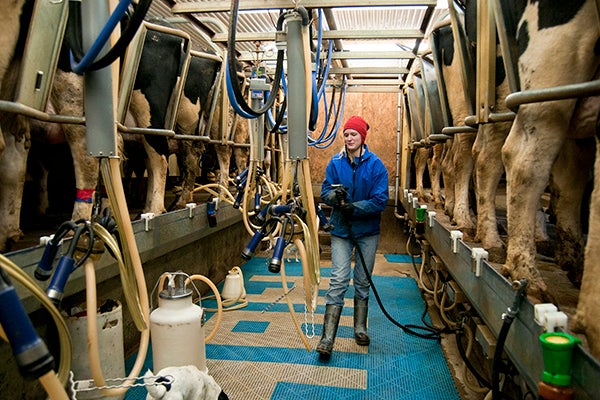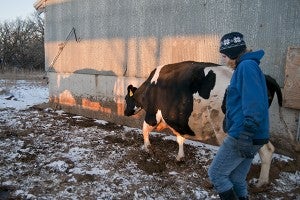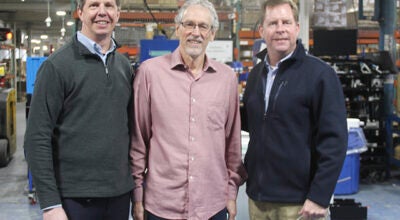Milk price drop brings concerns in Minn. dairy country
Published 10:30 am Friday, March 20, 2015

Molly Maasz works on milking cows at the Hoffman farm in rural New Ulm on Thursday. Mass has worked on the farm for seven years. – Jackson Forderer for MPR News
By Mark Steil, Minnesota Public Radio News
After several profitable years, dairy farmers are seeing their bull market crash.
Milk prices have dropped by more than one-third since last fall. China, a major American milk importer the past few years, is projected to slash imports this year by about $1 billion. And next month, the European Union will lift production caps on its farmers so they can produce as much milk as they want.
The global shifts are adding up to tighter budgets for some Minnesota farmers, with some starting to lose money on their monthly dairy operations.
It’s not clear how long the downturn will last. European officials said recently that dairy product prices there are starting to recover after production hit historic highs last year. They expect no surge in milk production after quotas are lifted in April. Commodity futures traders have also bid up year-end 2015 prices for milk about 10 percent higher than they are now.

Abby Maasz leads a herd of dairy cattle into the milking barn on Thursday afternoon at the Hoffman farm in rural New Ulm. Dairy prices in the state are falling, causing some concern for dairy farmers. – Jackson Forderer/MPR News
Still, current conditions have local observers concerned. The likelihood of additional supply from Europe has already weighed down milk prices, said Marin Bozic, assistant professor of applied economics at the University of Minnesota.
Even if the downturn in dairy prices is only short term, it may pressure some farmers to consider getting out of the business, added Bozic, who’s also associate director of the Midwest Dairy Foods Research Center, a joint effort with Iowa State and South Dakota State universities.
For decades the economics of milk have pushed dairy farms to grow larger.
In Minnesota, some farms now own thousands or even tens of thousands of cows. Bigger farms spend less to produce a hundredweight — 100 bulk pounds — of milk, said U.S. Department of Agriculture economist William McBride. A USDA study showed that average production costs on farms with 1,000 cows or more can be as much as a third less than on 100 cow operations, he added.
Steve Hoffman, 49, owns 140 cows at his dairy farm near New Ulm, in southern Minnesota. His herd’s daily milk production is worth about $1,500 but right now he says that’s not covering the bills.
The cows’ production paid for 97 percent of feed, labor and other expenses Hoffman pays to keep the animals in top milking condition. But the 3 percent shortfall adds up to a lot of money when it’s multiplied by 140 cows. Hoffman said he lost more than $1,000 on his milking operation in January.
He’s adjusted by cutting back on some components in the herd’s daily feed mixture that he says are not absolutely necessary. Plans to buy a used tractor are also on hold.
Hoffman, though, said he’s made it through worse economic times and that last year was “by far the best year I’ve ever had in dairy farming.”
The big profits helped him build a cash cushion, pay off debt and take care of some equipment needs. And he also expects milk prices will improve a bit by the end of the year.




